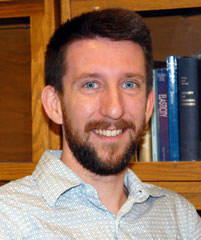Professor Ryan S. Elliott named American Society of Mechanical Engineers (ASME) Fellow
Associate Professor Ryan S. Elliott was named a Fellow of the American Society of Mechanical Engineers (ASME). He is one of a select number of 3,521 who have attained the grade of Fellow among over 106,993 members.
The ASME Board of Governors confers the Fellow grade in recognition of outstanding engineering achievements. Nominated by their peers, ASME Fellows have had 10 or more years of active practice and at least 10 years of continuous active corporate membership in ASME.
The citation accompanying Elliott’s election to Fellow reads:
“Professor Elliott is one of the best young theorists (between 35 to 45) specializing in multi-physics and multi-scale problems of solids and structures, their stability and associated numerical methods. His work, which uses modern bifurcation and symmetry techniques to illuminate complex behavior across multiple length-scales in solids and structures is characterized by quality, rigor, originality and permanent value to mechanical engineering. Prof. Elliott has received numerous awards for his teaching and research, including the ASME AMD's Thomas J.R. Hughes Award. He is actively involved in ASME's Applied Mechanics Division through the activities of the TC he chairs since 2013.”
Elliott joined the AEM as a faculty member in 2005. Dr. Elliott's research deals with stability and instability problems related to structures, materials, and microstructured materials. He pursues three major themes within this area: (I) development of nonlinear modeling of discrete and continuum solid-state materials and structures, capable of accurately predicting instability behavior and the associated multiple stable states of real systems; (II) development of analytical and computational methodologies (based on theories of symmetry, bifurcation, and pattern formation) that combine applied mathematics and scientific computing to systematically discover the multiple stable states predicted by a given nonlinear model; and (III) development of open source scientific software, and the creation and support of user communities who benefit from these software packages.
Last Modified: 2017-11-13 at 12:55:52 -- this is in International Standard Date and Time Notation



